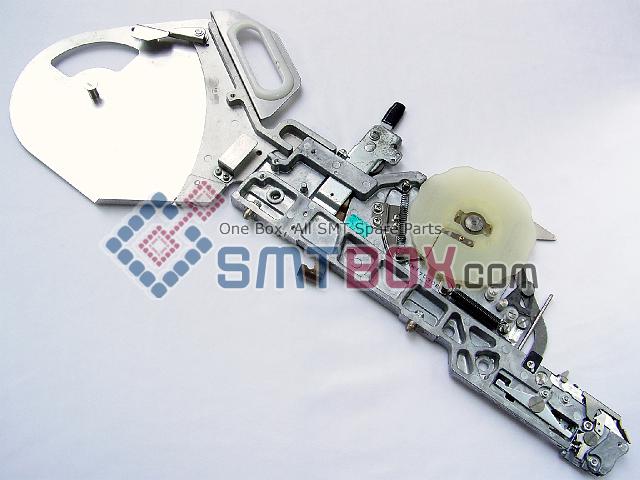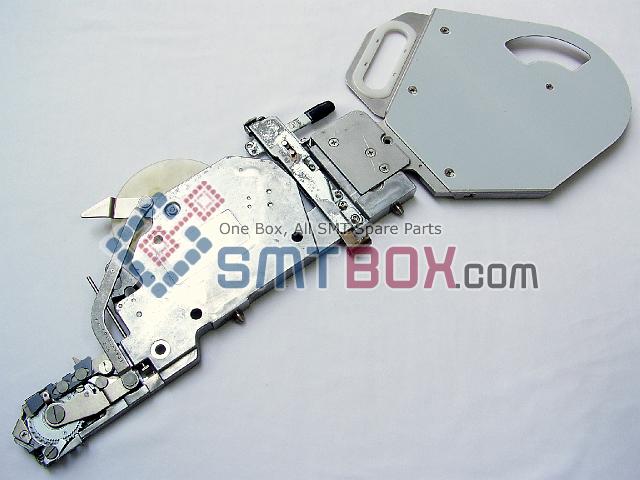The Panasert MVIIVB IS a high-speed placement machine with five types of vacuum nozzle for precise placement of components ranging from 0603 microchips to 32 mm QFPs. Integrating both reflective and transmissive recognition systems for greatly improved placement quality, the MVIIVB can handle BGAs and CSPs, accommodating future expansion of the range of component types.
Multifunctional high-speed placement machine with visual recognition.
Versatile Placement Machine Enabling Fast and Precise Placement of a Wide Range of Components.
Multifunctional high-speed placement machineHigh Overall Productivity
- The maximum placement speed is 0.1 sec/ piece (microchips). The placement speed for large-size components such as SOPs has also been significantly improved.
- The PC board transfer speed has been significantly increased.
- The X-Y table moves +/- 15 mm in 0.1 second.
Versatile Nozzle
Equipped with 12 placement heads, each with five vacuum nozzles.
Double Feeder Design
Double feeder can store two types of 8 mm taped components in the same space used by a conventional cassette, allowing up to 300 different components to be loaded.
Reflective and Transmissive Recognition System
- Combination of reflective recognition system and transmissive system for high-speed handling of a wide range of components.
- Directly detects and recognizes electrodes, enabling high-precision placement of narrow-pitch QFPs, PLCCs with electrodes on the underside, and 0603 and other microchips.
Reflective and Transmissive Recognition System
- Combination of reflective recognition system and transmissive system for high-speed handling of a wide range of components.
- Directly detects and recognizes electrodes, enabling high-precision placement of narrow-pitch QFPs, PLCCs with electrodes on the underside, and 0603 and other microchips.
- High speed placement of medium and large components.
- Can handle BGAs and CSPs (selected specifications).
The Panasert MVIIF IS a high-speed placement machine with five types of vacuum nozzle for precise placement of components ranging from 1005 microchips to 32 mm QFPs at a speed of 0.1 sec/ piece. Integrating both reflective and transmissive recognition systems for greatly improved placement quality, the MVIIF accommodates future expansion of the range of component types.
Multifunctional high-speed placement machine with visual recognition.
Versatile Placement Machine Enabling Fast and Precise Placement of a Wide Range of Components.
SMD Placement
Multifunctional high-speed placement machine with visual recognition.High Overall Productivity
- The maximum placement speed is 0.1 sec/ piece (microchips). The placement speed for medium-size components such as SOPs has also been significantly improved.
- Higher overall productivity has been achieved through increased placement speed due to faster X-Y and parts supplier movement.
- The head speed and the X-Y movement speed can be set separately. A faster X-Y movement can be set for the first component of each component group, leading to greater overall placement speed. (The speed is invariable for the rest of the components in the group.)
Versatile Nozzle
- Equipped with 12 placement heads, each with five suction nozzles.
- The head has been made smaller and reliability enhanced.
- The cam mechanism on the head ensures smooth movement at high speeds.
Double Cassette Design
Double cassette can store two types of 8 mm taped components in the same space used by a conventional cassette, allowing up to 300 different components to be loaded.
Reflective and Transmissive Recognition System
Combination of reflective recognition system and transmissive system for high-speed handling of a wide range of components.
Directly detects and recognizes electrodes, enabling high-precision placement of narrow-pitch QFPs, PLCCs with electrodes on the underside, and 1005 and other microchips with an error margin of ±W 0.1 mm.
Reflective and Transmissive Recognition System
Compatible with Intelligent Parts Cassette (IPC) system
Component management data is stored in the IPC memory which is attached to the parts cassette. The machine automatically reads this data to monitor for cassette loading errors.
Self-Diagnostic Function
Determines the cause should any trouble occur and graphically displays the required action on the monitor. The problem can be solved simply by following the instructions on the screen.
Ease of Operation
- Efficient information management (program editing, selection, operating status, production management) is performed through an interactive man-machine color screen interface.
- Once the parts data is input, it is automatically learned during production of the first PC board.
All information necessary for operation can be programmed. Data input and editing are possible even during operation, flexibly meeting any PC board production needs.
Flexible Operation for High Productivity
- Automatic width control and board thickness adjustment help to improve productivity. Reversible board transfer is also a standard feature.
- Data communication through an RS-232C serial port and CIM compatibility are provided.










